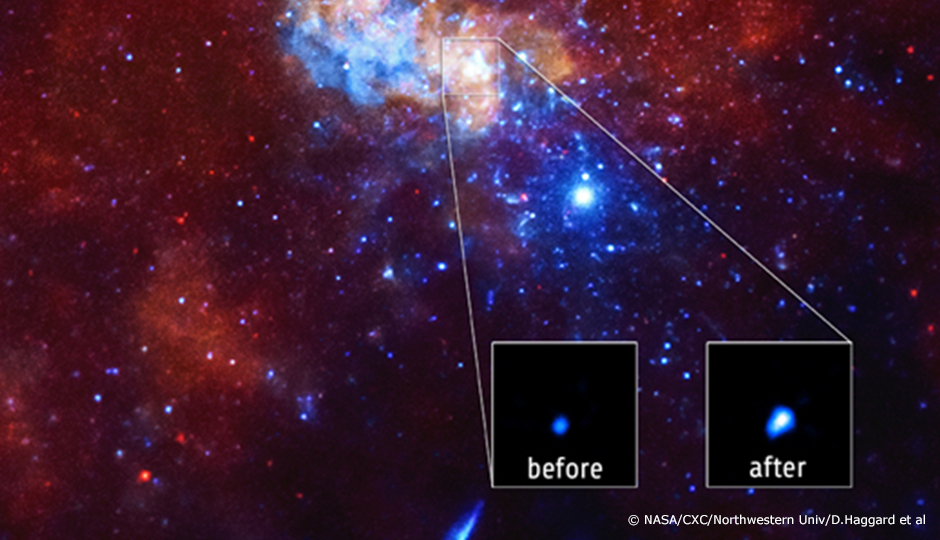
Sagittarius A* is a supermassive black hole like no other. This celestial object about 4.5 million times more massive than the Sun sits at the center of the Milky Way, 26,000 light years from Earth. As a result, Sgr A* is one hundred times closer to our planet than any other supermassive black hole, making it an ideal laboratory for studying the complex astrophysical microphenomena that occur around such objects. McGill University Physics professor Daryl Haggard is interested in the intense high-energy radiation emissions from Sgr A*, particularly X-rays.
Sgr A* is one hundred times closer to our planet than any other supermassive black hole.
To study these, she draws on astronomical data generated by multi-wavelength observatories, including the Chandra and Swift X-ray space telescopes. Her work also uses observations made through collaborations with the Very Large Array radio telescope, located on the Earth’s surface, and with XMM Newton, a space observatory dedicated to the study of X-rays. These images were all captured in 2017 and 2018, following an intense coordinated international effort. They have since been analyzed and interpreted by Daryl Haggard’s team.
A first photo of Sgr A* should be published in the next few years or even months. It will be accompanied by an explanation of the exact origin of the energy emanating from the plasma disk that revolves around the event horizon of the supermassive black hole. Ultimately, this work will advance knowledge on the formation and growth of these celestial objects, subjects that are at the heart of modern astrophysics research. It will also lead to a better understanding of what happens to high-energy jets when they are ejected into the galaxy. The cutting-edge techniques developed to monitor supermassive black holes could one day be adapted for use in the development of everyday technologies.
